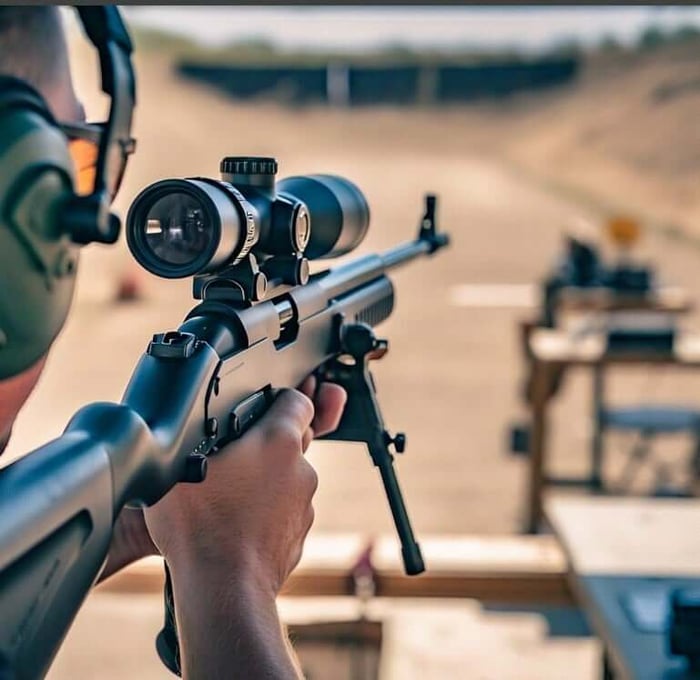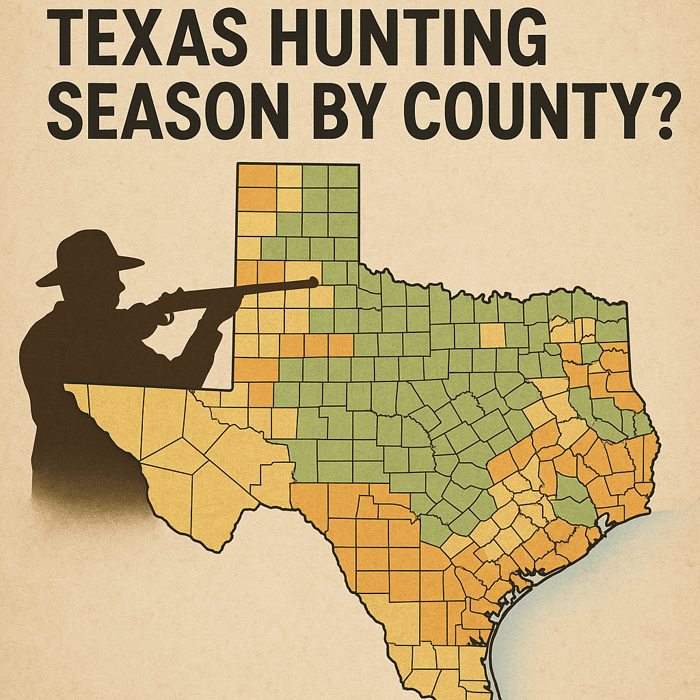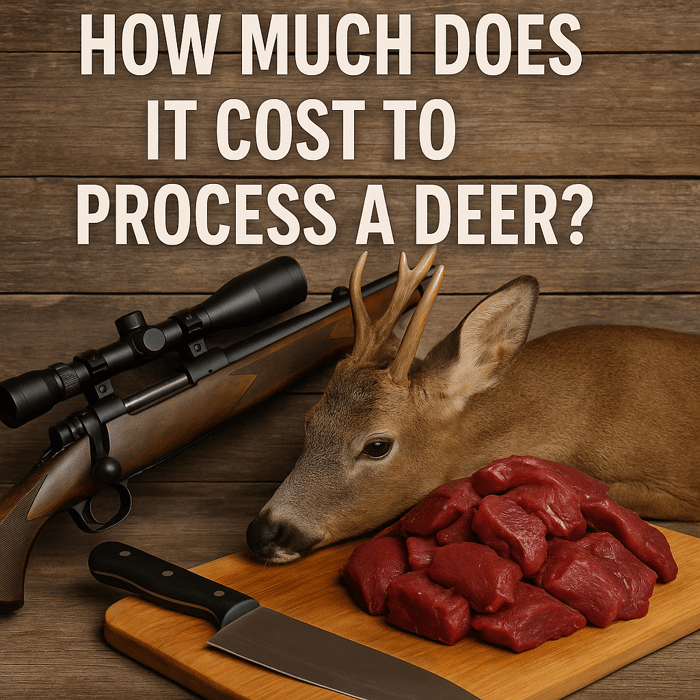Sighting in a rifle scope is one of the most important skills for any shooter, whether you’re a hunter, a competitive marksman, or just enjoy hitting the range. If you’ve ever wondered how to sight in a rifle scope for 100 yards, you’re in the right place. This manual will guide you through the process in an easy-to-understand, human-friendly manner, so you can be as accurate as possible at 100 yards. By the time you are finished, you will have no doubt that you can zero your scope and make your shot with consistency.
What Does It Mean to Sight in a Rifle Scope for 100 Yards?
Before we dive into the details of how to sight in a rifle scope for 100 yards, let's define what "sighting in" is. Sighting in, or zeroing, is simply adjusting your scope so that your crosshairs line up with where your bullet strikes at a certain distance, say 100 yards. With your scope correctly zeroed, you can aim at a target 100 yards away, and the bullet will strike exactly where the crosshairs are.
Why 100 yards? It's a typical sight-in distance because it's a useful range for most target and hunting situations. Additionally, after your rifle is zeroed in at 100 yards, it will be easier to adjust for farther or closer shots.
Why Is Sighting in Important
If your scope isn’t zeroed, your shots will be off, no matter how good your aim is. Imagine aiming at a deer 100 yards away, only to miss because your scope wasn’t properly aligned. Knowing how to sight in a rifle scope for 100 yards ensures your shots are accurate, which is critical for ethical hunting, competitive shooting, or even casual range time.
Tools You'll Need to Sight in a Rifle Scope for 100 Yards
To effectively zero your scope, you'll require a few tools and pieces of equipment. Don't panic—this isn't a lengthy list, and most of these are items you probably already have if you're a shooter.
Essential Equipment
Rifle and Scope: Of course, you'll need the rifle and the scope you wish to sight in.
Ammunition: Shoot the same ammo you'll be using regularly, as bullet weight and brand can influence accuracy.
Target: A paper target with an easy-to-see bullseye is best. You can purchase these at any gun store or print one at home.
Shooting Rest or Sandbags: These hold your rifle steady to remove the human element while sighting in.
Screwdriver or Allen Wrench: Most scopes need a small tool to turn the windage and elevation turrets.
Tape Measure or Rangefinder: To ensure your shooting distance is precisely 100 yards.
Spotting Scope or Binoculars: These allow you to observe where your shots are hitting without having to walk to the target each time.
Having these tools ready will make how to sight in a rifle scope for 100 yards a smoother process. Now, let’s get to the steps!
Step-by-Step Guide: How to Sight in a Rifle Scope for 100 Yards
Here’s the meat of the article: a detailed, beginner-friendly guide to zeroing your rifle scope at 100 yards. Follow these steps carefully, and you’ll be hitting the bullseye in no time.
Step 1: Safety First
Safety first. Before you even lay hands on your rifle, safety comes first. Make sure your firearm is not loaded, and have the muzzle pointed safely away. Check double that there's no round in the chamber. Safety takes precedence when you're learning how to sight in a rifle scope for 100 yards.
Step 2: Mount and Secure the Scope Properly
If your scope isn’t already mounted, you’ll need to do this first. A poorly mounted scope will make zeroing impossible. Here’s how to do it:
Choose the Right Rings and Base: Ensure your scope rings and base are compatible with your rifle and scope.
Align the Scope: Place the scope in the rings and tighten them just enough to hold it in place but still allow movement.
Set Eye Relief: Peer through the scope with the rifle in your shooting position. Move the scope forward or backward until you have a distinct, full view with no black edges.
Level the Reticle: Level the crosshairs with a bubble level.
Tighten Everything: Tighten the rings firmly, but not too tightly, once aligned, as this will damage the scope.
A well-mounted scope is the base of how to sight in a rifle scope for 100 yards.
Step 3: Bore Sight Your Rifle
Bore sighting is an initial process that gets your scope within reach of zero without firing a shot. Though not required, it saves time and ammo. Here's how:
Remove the Bolt (for Bolt-Action Rifles): Peep through the barrel and put it on target 25-50 yards down range.
Adjust the Scope: Without relocating the rifle, move the scope's crosshairs to align with the same point as the barrel.
Use a Bore Sighter (Optional): A laser bore sighter can make this step easier by shining a laser dot on your target.
Bore sighting puts you in the general area, making the real zeroing easier when you're learning how to sight in a rifle scope at 100 yards.
Step 4: Range Set Up
Visit a shooting range with a guaranteed 100-yard distance. Set up your target precisely at 100 yards using a tape measure or rangefinder. Set up your rifle on a steady rest or sandbags to reduce movement. A solid setup is important to master how to sight in a rifle scope for 100 yards.
Step 5: Fire a Test Group
Load your rifle with the ammunition you intend to shoot regularly. Shoot three shots at the center of the target, targeting the bullseye. This is referred to as a "group." Don't panic if the shots aren't hitting the bullseye yet—this is just to observe where your rifle is striking.
Use a binocular or a spotting scope to verify where the group settled. Ideally, your three shots will be in close proximity to one another, meaning you have been shooting consistently. If they're far apart, you will have to improve on your shooting skill before proceeding with how to sight in a rifle scope for 100 yards.
Step 6: Adjust the Scope
Now it is time to sight in your scope's windage (left-right) and elevation (up-down) turrets to shift the point of impact to the bullseye. Most scopes include markings as to how much every click shifts the point of impact (for instance, 1/4 MOA per click, roughly equal to 1/4 inch at 100 yards).
Measure the Distance: Note how far your group is from the bullseye. For example, if your shots are 2 inches low and 3 inches to the right, you’ll need to adjust up and left.
Make Adjustments: Follow your scope’s instructions to turn the turrets. For example, if each click moves the impact 1/4 inch at 100 yards, and you’re 2 inches low, you’ll need 8 clicks up (2 ÷ 0.25 = 8).
Fire Another Group: Shoot another three-shot group to see if your adjustments worked.
Repeat this process until your shots consistently hit the bullseye. Patience is key when learning how to sight in a rifle scope for 100 yards.
Step 7: Fine-Tune and Confirm Zero
Once your shots are close to the bullseye, fire a five-shot group to confirm your zero. If the group is tight and centered, congratulations—you’ve successfully zeroed your scope! If not, make small adjustments and keep testing.
To make it safe, shoot several more groups on the next couple of range outings. Environmental influences such as temperature or wind might have a bit of impact upon your zero, so it's a good thing to check once in a while when learning to sight in a rifle scope to 100 yards.
Common Mistakes to Avoid When Sighting in a Rifle Scope for 100 Yards
Even with a good tutorial on how to sight in a rifle scope at 100 yards, errors can occur. Here are some common errors and how to prevent them:
Error 1: Changing Ammo
Changing the type of ammo used while sighting in will disrupt your zero. Use the same brand, bullet weight, and type throughout the process.
Error 2: Not Considering Environmental Conditions
Wind, temperature, and even altitude can affect bullet trajectory. Try to sight in on a calm day with conditions similar to when you’ll be shooting.
Mistake 3: Overtightening Scope Rings
Overtightening can damage your scope or misalign it. Tighten just enough to keep it secure.
Mistake 4: Rushing the Process
Sighting in takes time and patience. Don’t skip steps or assume you’re done after one group. Take your time to ensure accuracy when learning how to sight in a rifle scope for 100 yards.
Tips for Maintaining Your Zero After Sighting In
Once you’ve mastered how to sight in a rifle scope for 100 yards, you’ll want to keep your scope zeroed. Here are some tips:
Check Your Scope Periodically: Drops, bumps, or temperature changes may change your zero. Inspect your zero prior to significant hunts or competitions.
Store Your Rifle Carefully: Store your rifle in a padded case to cushion the scope against impacts.
Re-Zero After Adjustments: When you change ammo or modify your rifle, re-zero your scope.
Clean Your Rifle: A dirty barrel will impact accuracy, so keep your weapon in good condition.
By following these tips, you’ll ensure your rifle stays accurate long after you’ve learned how to sight in a rifle scope for 100 yards.
Advanced Considerations for Sighting in a Rifle Scope for 100 Yards
If you’re ready to take your skills to the next level, here are some advanced tips for how to sight in a rifle scope for 100 yards:
Understanding Ballistic Drop
At 100 yards, most bullets drop very little, but it's still good to know your ammo's ballistic profile. Utilize a ballistic calculator to forecast your bullet's behavior at varying ranges.
Compensating for Wind
Even a gentle wind will deflect your bullet from its path at 100 yards. Get used to reading wind flags or employ a wind meter to make live adjustments.
Employing a Chronograph
A chronograph will measure the velocity of your bullet, and this can assist you in tweaking your zero on particular ammunition. This is particularly helpful for high-range shooting.
These sophisticated techniques will make it easier for you to learn how to sight in a rifle scope for 100 yards.
Why 100 Yards Is the Best Zeroing Distance
You may be curious as to why 100 yards is the favorite distance for sighting in. Here's why it's so popular:
Versatility: Most hunting and target shooting situations use a 100-yard zero effectively, since it's an average engagement range.
Ease of Adjustment: Once zeroed, it's simple to make the adjustment to greater ranges (such as 200 or 300 yards) utilizing holdovers or turret adjustment.
Standardization: A wide variety of ballistic charts and scope reticles use a 100-yard zero basis, which helps to more readily predict bullet drop.
Recognizing why 100 yards is best supports the necessity of learning to sight in a rifle scope to 100 yards.
Troubleshooting: What to Do If You Can't Get Zeroed
There are times when, even with your diligence, you simply can't zero your scope. The following troubleshooting advice for how to sight in a rifle scope to 100 yards may help:
Check Scope Mount: Loose rings or a misaligned base can cause inconsistency. Double-check all screws and alignment.
Inspect the Scope: A damaged or defective scope may not hold zero. Test with another scope if possible.
Verify Ammo Consistency: Low-quality or inconsistent ammo can cause erratic groups. Switch to a reputable brand.
Get a Second Opinion: If you’re new to shooting, ask an experienced shooter to review your setup and technique.
Don't quit—troubleshooting is a part of the learning process in mastering how to sight in a rifle scope for 100 yards.
Conclusion: Master How to Sight in a Rifle Scope for 100 Yards
Sighting in a rifle scope at 100 yards might seem intimidating at first, but with the right tools, patience, and practice, anyone can do it. By following this step-by-step guide on how to sight in a rifle scope for 100 yards, you’ll achieve the accuracy needed for hunting, target shooting, or any other shooting activity. Remember to prioritize safety, use consistent ammo, and take your time to fine-tune your zero.
Now that you've learned how to zero a rifle scope at 100 yards, pick up your rifle, go to the range, and get zeroing. With practice, you will be shooting the bullseye every time. Enjoy shooting!





